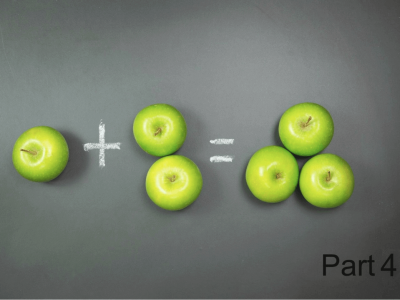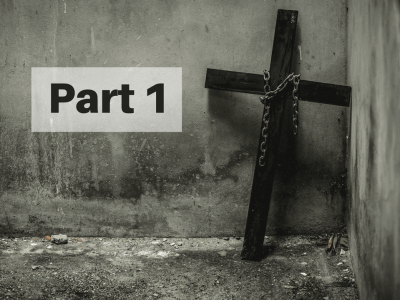Decoding Hebrews – Chapter 6
Understanding Hebrews Chapter 6: A First-Century Jewish Perspective
Introduction
The Book of Hebrews, particularly Chapter 6, offers a profound exploration of foundational Jewish doctrines, urging believers to move beyond elementary teachings toward maturity. Written to Jewish believers in the first century, the text assumes a deep understanding of the cultural and religious context of the time—rooted in the Torah, temple practices, and Jewish theology. This article delves into Hebrews 6:1-20, unpacking its key themes, such as repentance, faith, baptisms, laying on of hands, resurrection, and the Melchizedek priesthood, while emphasizing the importance of first-century Jewish culture for proper interpretation.
 The Cultural Backdrop: Why Context Matters
The Cultural Backdrop: Why Context Matters
To grasp the message of Hebrews, we must immerse ourselves in the first-century Jewish world. The author addresses an audience familiar with the temple service, the Torah, and the high priesthood. Without this context, modern readers risk misinterpreting the text by imposing contemporary Christian assumptions. The debates between Pharisees and Sadducees, the significance of ritual purity, and the practices of the Second Temple period form the backdrop of Hebrews. Misplacing this setting—akin to staging a play about Jesus in modern New York City—distorts the author’s intent. Understanding the culture, people groups, and theological debates of the time is crucial to unlocking the text’s meaning.
Elementary Doctrines: The Foundations of Faith
Hebrews 6:1-3 calls believers to move beyond the “elementary principles of Christ” toward “perfection,” or maturity. These foundational teachings, referred to as Yesodot (Hebrew for “foundations”), include:
- Repentance from Dead Works: In Jewish thought, ma’asim metim (dead works) refers to ritual actions performed without heartfelt covenant faithfulness. Rabbinic Judaism distinguished between empty rituals and “alive works” driven by genuine devotion. This aligns with James’ teaching that faith and works are inseparable (James 2:17). The author assumes his audience understands that true repentance involves a heart aligned with God, not mere external acts.
- Faith Toward God: The Hebrew concept of emunah goes beyond mere belief, encompassing covenantal loyalty and trust in God’s sovereignty. It reflects a worldview where every event, even suffering, is part of God’s plan to draw believers closer to Him. This robust faith, rooted in submission to God’s will, contrasts with superficial belief (James 2:19).
- Doctrine of Baptisms: The plural “baptisms” (baptismoi in Greek) points to the Jewish practice of mikvah, ritual immersion baths used for purification. Found throughout Israel, mikva’ot were tied to Torah commandments addressing ritual impurity (e.g., Leviticus 11–15, Numbers 19). Impurity, such as after childbirth or contact with a corpse, was not sin but created a barrier to entering sacred spaces like the temple. The mikvah symbolized spiritual renewal, akin to being “washed by the water of the word” (Ephesians 5:26). The author connects this to repentance, emphasizing that ritual without a contrite heart is meaningless, as seen in Qumran’s Community Rule (1QS 3:6-9).
- Laying on of Hands: Known as semikah, this practice involved transferring authority or blessing, as seen in sacrifices (e.g., Yom Kippur’s scapegoat ritual) or ordination (e.g., Moses and Joshua). For Jewish believers, it was a familiar act symbolizing identification with the sacrificial offering or the commissioning of leaders. In the context of Hebrews, it points to Christ’s authority as the ultimate high priest.
- Resurrection of the Dead and Eternal Judgment: The resurrection was a central hope in Pharisaic Judaism, affirmed in Daniel 12:2, while Sadducees denied it. The author assumes his audience accepts the resurrection, particularly the “first resurrection” through Christ (Revelation 20:4-6), with the second resurrection occurring at the final judgment (Revelation 20:11-15). Eternal judgment underscores the ultimate accountability before God, a concept deeply rooted in Jewish theology.
These doctrines were not novel but foundational to first-century Judaism. The author urges his readers to build upon them, not abandon them, as they mature in faith.
 Moving Beyond the Basics
Moving Beyond the Basics
The author’s call to “go on to perfection” is not a dismissal of Jewish theology for Christian superiority, as Christianity as a distinct religion did not yet exist. The New Testament was simply a collection of letters circulating among Jewish believers, built on the Hebrew Scriptures. The goal is maturity within the same covenantal framework, with Christ as the fulfillment of these practices. The author warns against remaining in spiritual infancy, assuming his audience already grasps these “basic tenets” that modern Christianity often debates or misunderstands.
The Warning Against Apostasy
Hebrews 6:4-6 delivers a sobering warning: those who have been enlightened, tasted the heavenly gift, and received the Holy Spirit, yet fall away, cannot be renewed to repentance. This “high-handed” rejection of Christ—deliberately denying Him after receiving knowledge—hardens the heart, likened to Pharaoh’s obstinacy. The author emphasizes the gravity of such apostasy, noting that it crucifies Christ anew and brings public shame.
The Imagery of Water and Torah
In verses 7-8, the author uses agricultural imagery: the earth that drinks rain produces useful herbs, while unfruitful land yields thorns and faces judgment. This metaphor ties to the Hebrew word Torah (instruction), derived from yarah, meaning “to throw water,” “shoot an arrow,” or “teach.” In ancient Hebrew pictographs, Torah (spelled Tav, Vav, Resh, Hey) symbolizes “the covenant of the nail is the head of revelation,” pointing to Christ as the Word made flesh (John 1:14). Similarly, yarah (Yod, Resh, Hey) means “the hand of the leader is revelation,” reinforcing Christ’s role as the ultimate teacher and authority. This imagery underscores the life-giving power of God’s Word when received with faith, contrasting with the barrenness of rejecting it.
Hope and the Melchizedek Priesthood
 The chapter concludes with an exhortation to perseverance, drawing on Abraham’s patient endurance to receive God’s promise (Hebrews 6:13-15). The author encourages believers to hold fast to hope, described as an “anchor for the soul” that enters the “presence behind the veil” (Hebrews 6:19). This points to Christ as the high priest in the order of Melchizedek, a central theme of Hebrews. Unlike the Levitical priesthood, which operated visibly in the temple, the Melchizedek priesthood—rooted in heavenly authority—supersedes it. Christ, as the forerunner, enters the Holy of Holies, securing eternal redemption.
The chapter concludes with an exhortation to perseverance, drawing on Abraham’s patient endurance to receive God’s promise (Hebrews 6:13-15). The author encourages believers to hold fast to hope, described as an “anchor for the soul” that enters the “presence behind the veil” (Hebrews 6:19). This points to Christ as the high priest in the order of Melchizedek, a central theme of Hebrews. Unlike the Levitical priesthood, which operated visibly in the temple, the Melchizedek priesthood—rooted in heavenly authority—supersedes it. Christ, as the forerunner, enters the Holy of Holies, securing eternal redemption.
Conclusion
Hebrews Chapter 6 challenges believers to grow beyond foundational doctrines while remaining anchored in the rich Jewish context of the first century. Repentance, faith, ritual purity, authority, and resurrection are not mere “baby stuff” but the bedrock of a mature faith centered on Christ. By understanding the cultural and theological backdrop, we see that the author is not replacing Judaism with a new religion but fulfilling it through Yeshua, the covenant of the nail and the head of revelation. As we await the promise, like Abraham, we are called to patience, trusting in the immutable counsel of God and the priesthood of Melchizedek.
Watch full teaching here:
https://youtu.be/M31Qakbuf0o












